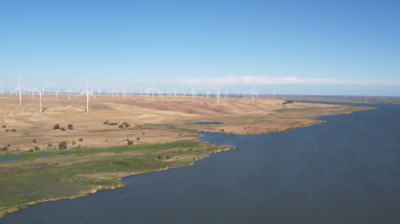California Resilience Spotlight Series: Repairing the Gold Rush’s Tarnished Legacy
This is one in a series of profiles of the 12 winners of the California Resilience Challenge, a first-of-its-kind statewide initiative of the Bay Area Council and a diverse array of partners. The Challenge recently awarded $2 million in planning grants for a variety of innovative projects in communities across the state to address the growing impacts of climate change, including drought, floods, wildfires, and sea-level rise.
Europeans’ migration to the present-day United States had catastrophic environmental impacts. The Yuba River, one of California’s most historic waterways, is no exception. The excessive mining that occurred during the 19th century Gold Rush transformed the river and surrounding landscape. Although miners are long gone, numerous abandoned mines that cause watershed management challenges remain. A host of other land-use practices, including logging, ranching, and residential development have also devastated the Yuba watershed.
Landscape management projects in the Sierra-Nevada must consider the historical context of mine and meadow disturbance in the region to thoroughly assess watershed health. Thankfully, with a grant from the California Resilience challenge, the Yuba Water Agency can examine the impact of California’s Gold Rush on the Yuba Watershed.
There are two overarching goals of the project. The first goal is to expand forest resilience bond financing for mine remediation and meadow restorations. The second goal is to develop additional forest health projects that include mines and meadows. Forest resilience bond financing is critical in increasing the pace and scale of mine remediation and meadow restorations.
“This is about improving watershed health as a whole and increasing the amount of work that can take place by developing this financial mechanism to allow the work to go forward,” said Carrie Monohan, program director for The Sierra Fund.
Examining and correcting the impact of hydraulic mining sites is essential because they contain sediment and mercury which can taint downstream water supplies and add to the cost of reservoir maintenance. By addressing mines, meadows, and forests concurrently, stakeholders can sustain ground water supplies, reduce fire risks, prevent flooding, address issues associated with both physical and chemical hazards of abandoned mine lands, and increase the overall resilience of the Yuba River watershed and surrounding communities.
It is the objective of the California Resilience Challenge to support projects that can be expanded and applied elsewhere across the state, providing a foundation for sustaining millions of acres of land. To learn more about the California Resilience Challenge, please contact Policy Associate Anna Sciaruto.
Special thanks to California Resilience Challenge funders PG&E, JPMorgan Chase & Co., Valley Water, Metropolitan Water District, Southern California Edison, Resources Legacy Fund, Alaska Airlines, SFPUC, SD Bechtel Jr. Foundation, and Pillsbury; and special thanks to Advisory Committee members AECOM, Pillsbury, Climate Resolve, Environmental Defense Fund, Ceres, and the Governor’s Office of Planning and Research.





